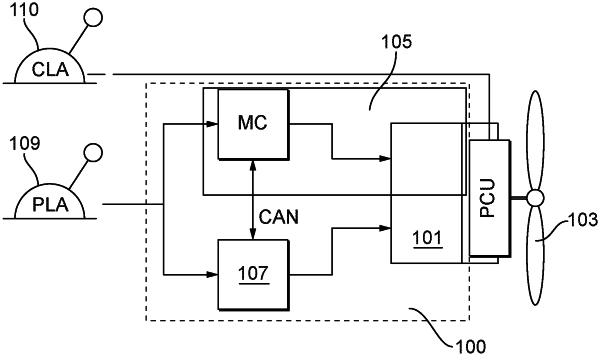| CPC B64D 31/06 (2013.01) [B64D 27/24 (2013.01); B64D 31/14 (2013.01); B64D 2027/026 (2013.01)] | 24 Claims |

|
11. A hybrid electric aircraft powerplant system, comprising:
a heat engine system configured to provide torque to a propulsion device;
an electric motor system configured to provide torque to the propulsion device in addition to and/or independently of the heat engine system; and
a hybrid electric engine control module (ECU) configured to be operatively connected to a hybrid electric aircraft powerplant having a heat engine system and an electric motor system to control a torque output from each of the heat engine system and the electric motor system, the ECU being configured to:
determine that the hybrid electric aircraft powerplant is in a normal mode such that the electric motor system and the heat engine can provide a predetermined amount of torque;
receive a first power lever (PLA) setting associated with a first total torque setting;
split output power between the electric motor system and the heat engine system in accordance with the normal mode as a function of the first total torque setting so that the electric motor system outputs a first electric motor system torque and the heat engine system outputs a first heat engine system torque;
receive a second PLA setting associated with a second total torque setting lower than the first total torque setting; and
split output power between the electric motor system and the heat engine system in accordance with the normal mode as a function of the second total torque setting so that the electric motor system outputs a second electric motor system torque lower than the first electric motor system torque and the heat engine system outputs the first heat engine system torque.
|